There is a program that builds a matrix for a color gradient from white to black. Then, a dithering algorithm is applied to the matrix to eliminate the "stripes". 4 methods of dithering are implemented: Ordered, Random, Floyd-Steinberg, Jarvis-Judice-Ninke. First, I create a matrix of a certain size, convert it to a gradient, and output the result to a file format .pgm, type P5. If I translate the file into .png, I get the following image:

However, when you zoom in on the image, you can see the stripes (if you look closely):

This is the result of the program without dithering. The problem is that if you apply one of the dithering algorithms to the matrix, then stripes remain on the image. The result suggests that dithering does not work. What could be wrong? Do I need to use dithering first, and then build a gradient? Or the error is that you need to create a matrix of float or double type? How can I fix it?
Code:
#include "stdafx.h"
#include <iostream>
#include<algorithm>
#include<iterator>
#include<fstream>
#include<vector>
#include<cassert>
#include <ctime>
#include <sstream>
using namespace std;
vector<vector<int>> make_gradient(int height, int width)
{
assert(height > 0 && width > 0);
int cf = height / 255;
int color = 0;
vector<vector<int>> result(height, vector<int>(width));
for (int i = 0; i < height; i += cf)
{
for (int j = 0; j < cf; ++j)
{
fill(result[i + j].begin(), result[i + j].end(), color % 255);
}
color++;
}
stable_sort(result.begin(), result.end());
return result;
}
vector<vector<int>> ordered_dither(int height, int width, vector<vector<int>> result)
{
int ditherSize = 4;
int diterLookup[] = { 0, 8, 2, 10, 12, 4, 14, 6, 3, 11, 1, 9, 15, 7, 13, 5 };
for (int i = 0; i < height; i++)
{
for (int j = 0; j < width; j++)
{
int xlocal = i%ditherSize;
int ylocal = j%ditherSize;
int requiredShade = diterLookup[xlocal + ylocal * 4] * 255 / 16;
if ((requiredShade > 0) && (requiredShade < 1))
{
if (requiredShade >= (result[i][j] % 1)) {
result[i][j] = floor(result[i][j]);
}
else {
result[i][j] = ceil(result[i][j]);
}
}
else requiredShade = 0;
}
}
return result;
}
vector<vector<int>> random_dither(int height, int width, vector<vector<int>> result)
{
for (int i = 0; i < height; i++)
{
for (int j = 0; j < width; j++)
{
int requiredShade = (float)rand() / RAND_MAX;
if ((requiredShade > 0) && (requiredShade < 1))
{
if (requiredShade >= (result[i][j] % 1)) {
result[i][j] = floor(result[i][j]);
}
else {
result[i][j] = ceil(result[i][j]);
}
}
else requiredShade = 0;
}
}
return result;
}
vector<vector<int>> fs_dither(int height, int width, vector<vector<int>> result)
{
for (int i = 0; i < height; i++)
{
for (int j = 0; j < width; j++)
{
int oldpixel = result[i][j];
int newpixel = round(result[i][j]);
result[i][j] = newpixel;
int quanterror = oldpixel - newpixel;
if (j < width - 1) {
result[i][j + 1] += quanterror * 7 / 16;
}
if (i < height - 1) {
if (j > 0) {
result[i + 1][j - 1] += quanterror * 3 / 16;
}
result[i + 1][j] += quanterror * 5 / 16;
if (j < width - 1) {
result[i + 1][j + 1] += quanterror * 1 / 16;
}
}
}
}
return result;
}
vector<vector<int>> jjn_dither(int height, int width, vector<vector<int>> result)
{
for (int i = 0; i < height; i++)
{
for (int j = 0; j < width; j++)
{
int oldpixel = result[i][j];
int newpixel = round(result[i][j]);;
result[i][j] = newpixel;
int quanterror = oldpixel - newpixel;
if (j < width - 1) {
result[i][j + 1] += quanterror * 7 / 48;
if (j<width - 2)
result[i][j + 2] += quanterror * 5 / 48;
}
if (i < height - 1) {
if (j > 0) {
if (j > 1)
result[i + 1][j - 2] += quanterror * 3 / 48;
result[i + 1][j - 1] += quanterror * 5 / 48;
}
result[i + 1][j] += quanterror * 7 / 48;
if (j < width - 1) {
result[i + 1][j + 1] += quanterror * 5 / 48;
if (j < width - 2)
result[i + 1][j + 2] += quanterror * 3 / 48;
}
}
if (i < height - 2) {
if (j > 0) {
if (j>1)
result[i + 2][j - 2] += quanterror * 1 / 48;
result[i + 2][j - 1] += quanterror * 3 / 48;
}
result[i + 2][j] += quanterror * 5 / 48;
if (j < width - 1) {
result[i + 2][j + 1] += quanterror * 3 / 48;
if (j < width - 2)
result[i + 2][j + 2] += quanterror * 1 / 48;
}
}
}
}
return result;
}
int main(int argc, char *argv[])
{
if (argc < 5) {
cout << "usage:" << endl << "prog.exe <filename> <width> <height> <dithering>" << endl;
return 0;
}
stringstream w(argv[2]);
stringstream h(argv[3]);
stringstream d(argv[4]);
int numcols, numrows, dithering;
if (!(w >> numcols)) {
cout << "width is not a number" << endl;
return 0;
}
if (numcols < 1) {
cout << "width must be more than zero" << endl;
return 0;
}
if (!(h >> numrows)) {
cout << "height is not a number" << endl;
return 0;
}
if (numrows < 1) {
cout << "height must be more than zero" << endl;
return 0;
}
if (!(d >> dithering)) {
cout << "dithering is not a number" << endl;
return 0;
}
if (dithering < 0 || dithering>4) {
cout << "dithering must be [0-4]" << endl;
return 0;
}
srand(time(0));
ofstream file;
file.open(argv[1]);
if (!file)
{
cout << "can't open file" << endl;
return 0;
}
file << "P5" << "\n";
file << numrows << " " << numcols << "\n";
file << 255 << "\n";
vector<vector<int>> pixmap{ make_gradient(numrows, numcols) };
switch (dithering) {
case 1:
pixmap = ordered_dither(numrows, numcols, pixmap);
break;
case 2:
pixmap = random_dither(numrows, numcols, pixmap);
break;
case 3:
pixmap = fs_dither(numrows, numcols, pixmap);
break;
case 4:
pixmap = jjn_dither(numrows, numcols, pixmap);
break;
default:
break;
}
for_each(pixmap.begin(), pixmap.end(), [&](const auto& v) {
copy(v.begin(), v.end(), ostream_iterator<char>{file, ""});
});
file.close();
}
